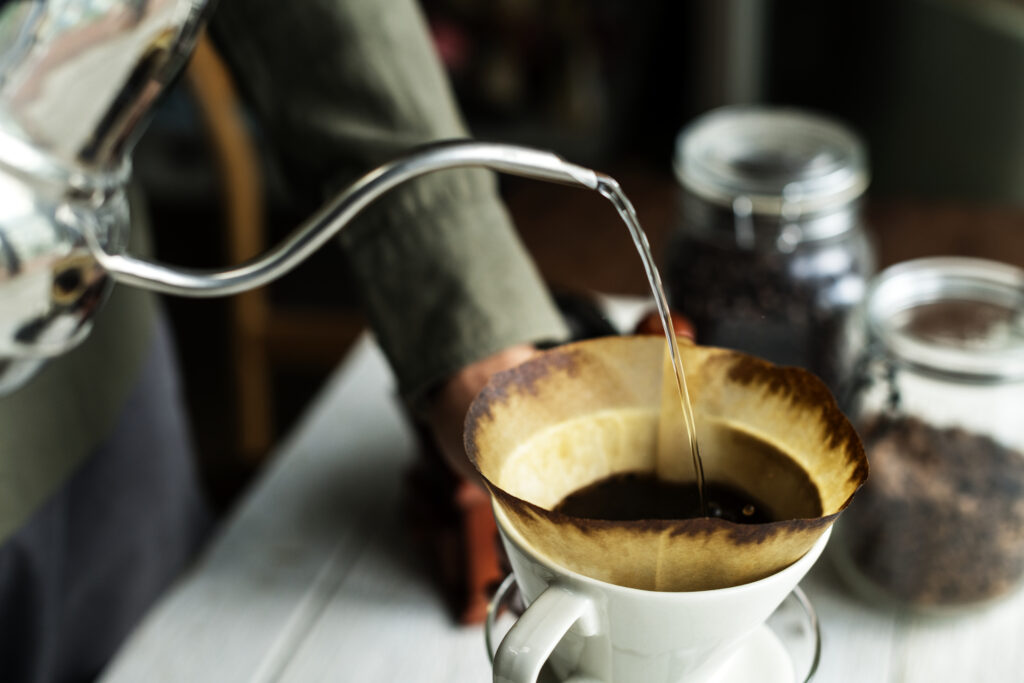Table of Contents
Introduction

Coffee enthusiasts know the delight of a perfect brewed cup, and for some, the pour-over technique rules. Pour-over coffee isn’t simply an on-the-horizon procedure; it’s a work of art that draws out the full complexity and flavour of coffee beans. This guide jumps into the best pour-over coffee grinder, furnishing you with tips and experiences to create an extraordinary cup like every time.
Why Choose Pour-Over Coffee?
Pour-over coffee offers unmatched control over the brewing process. Unlike programmed machines, it permits you to impact each factor—from water temperature to brewing time. This hands-on approach features unpretentious flavors and aroma frequently lost in different strategies, making it a 1 among coffee enthusiasts.
Benefits of pour-over coffee include:
- A clean and crisp flavor profile.
- Control over strength and taste.
- Minimal gear for a gourmet result.
Essential Tools for Pour-Over Coffee?
To perfect your method, you’ll require the right tools. Here is a rundown of the basics:
1. Pour-Over Dripper: Common choices include the Hario V60, Kalita Wave, or Chemex. Each offers a unique brewing style.
2. High-Quality Coffee Beans: Freshly roasted beans ground explicitly for pour-over are great.
3. Gooseneck Pot: For exact water stream and even saturation of coffee beans.
4. Coffee Grinders: A burr grinder guarantees reliable grinding size, significant for even extraction.
5. Filter Papers: Designed to accommodate your dripper, these remove oils and silt for a clean brew.
6. Scale: Exactness in coffee and water proportions is ratio to consistency.
7. Thermometer: While optional, it guarantees water is at the best preparing temperature (195-205°F).
The Best Pour-Over Coffee Method
Since you have your apparatus, we should explore the step-by-step process to perfect the ideal pour-over coffee.
Step 1: Select Your Coffee
Choose beans with a roast profile that matches your taste preferences.Light to medium roasts are many times best for pour-overs, as they hold more delicate flavors and acidity. Freshness matters—choose beans roasted within the two weeks.
Step 2: Grind to Perfection
The grinding size is critical. For pour-over, hold back nothing coarse grinding, like sea salt. Assuming your coffee tastes too severe, the grinding may be excessively fine. Assuming it’s too powerless, the toil may be excessively coarse.
Step 3: Measure Your Ingredients
A good starting ratio is 1:16, meaning 1 gram of coffee for each 16 grams of water. For a single cup (around 300 ml), use 18–20 grams of coffee. Use a digital scale to ensure accuracy.
Step 4: Preheat Your Equipment
Rinse the filter water to remove any papery taste, and preheat your dripper and carafe. Discard rinsed water before brewing.
Step 5: Blossom the Coffee
Place the coffee grounds in the filter and make a little well in the center. slowly pour about twis the weight of the coffee in water (e.g., 40 grams of water for 20 grams of coffee). This process, called the sprout, alled the bloom, released trapped gases, and enhanced flavor. Allow it to sit for 30-45 seconds.
Step 6: Start Pouring
Using a gooseneck pot, pour water in sluggish, circular motions, beginning from the center and spiraling outward. Keep an even stream; it is immersed to guarantee all grounds. Avoiding to pour straightforwardly onto the edges of the filter to prevent channeling.
Step 7: Control Your Brew Time
The complete brew time ought to be somewhere in the between of 2:30 and 4 minutes, depending on your grind size and coffee-to-water ratio. Adjust your pouring speed and technique to remain inside this window.
Step 8: Serve and Enjoy
When the brewing is complete, remove the dripper and whisk your coffee to blend and serve right away. Pause for a minute to see the value in the smell before your most memorable taste!
Tips for Refining Your Pour-Over Technique
1. Explore different ratios: Adjust the coffee to water ratio to suit your taste. A 1:15 ratio yields a more grounded brew, while 1:17 results in a milder cup.
2. Mind the Water Temperature: Too hot, and you’ll over-extract; too cool, and the coffee will taste disappointing. Adhere to the perfect balance of 195-205°F.
3. Pour Consistency: A consistent, controlled pour guarantees even extraction. Practice your pouring technique for precision.
4. Taste and Change: Each coffee bean is unique. variables like grinding size, water amount, and brew time to bring out the best flavors.
Common Mistakes and How to Avoid Them
1. Using old coffee: Consistently grind fresh beans for the best result. Pre-ground coffee loses its flavor quickly.
2. Ignoring grind size: Uneven, incorrect grind sizes lead to inconsistent extraction and unequal flavors.
3. Rushing the Process: Pour-over coffee is a more slow-preparing technique. Embrace the process and take as much time as is needed.
4. Skipping the Bloom: Disregarding this step can trap CO₂ in the coffee ground, leading to uneven extraction.
Explore Popular Pour-Over Gadgets
Each pour-over gadget offers a unique preparation experience. Here is a quick comparison:
Hario V60: Known for its cone shape and large, simple hole, it requires precision. but conveys an energetic cup.
Chemex: designed for different servings, it involves thicker filler for a cleaner taste.
Kalita Wave: With a flat-bottom design, it’s really sympathetic and guarantees even extraction.
The Art of Pour-Over Coffee: Why It’s Worth The effort
Pour-over coffee isn’t just about preparing; it’s about engaging with the process. From the second you grind the beans to the last taste, the excursion upgrades your appreciation for coffee’s intricacy. It changes an everyday custom into a careful encounter.
Conclusion:
Mastering pour-over coffee requires practice, persistence, and a willingness to experiment. With the right tools, Tequniqe high-quality beans, you can unlock flavors that elevate your coffee experience. In this way, snatch your dripper, heat up some water, and plunge into the universe of pour-over coffee—it orth each drop.
